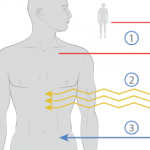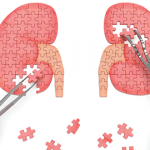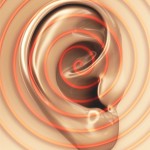NEW YORK (Reuters Health)—The prevalence of antinuclear antibodies (ANA) in the blood of U.S. adolescents and adults has increased over the past 30 years, signaling a rise in autoimmunity, researchers say. “It is not known if these same increases are occurring in other parts of the world, but because ANA are associated with many autoimmune…

Fellows’ Forum Case Report: Necrotizing Autoimmune Myopathy
Necrotizing autoimmune myopathy (NAM) is a relatively recently discovered subgroup of inflammatory myopathies. NAM is characterized by predominant muscle fiber necrosis and regeneration with little or no inflammation.1 One subgroup of NAM is 3-hydroxy-3-methylglutaryl-CoA reductase antibody (HMGCR Ab)-related immune-mediated necrotizing myopathy (IMNM), which occurs (rarely) after statin exposure, with a rough incidence of two per…

What Do Diabetes, Islet Cells & Autoimmunity Have in Common?
“Man may be the captain of his fate, but he is also the victim of his blood sugar.” —Wilfrid Oakley, MB BChir, an early pioneer in diabetes care Perusing the list of the most notable medical achievements in the 20th century, a reader may conclude that the discovery of insulin should rank in a category…

HSCT for Severe Autoimmune Diseases
Despite the innovations of new biologics and disease-modifying anti-rheumatic drugs, a large unmet need remains for patients with rheumatic autoimmune disease. Treatment remains limited for many conditions, including for conditions with a dim prognosis, such as systemic sclerosis.1 One promising treatment avenue is hematopoietic stem-cell transplantation (HSCT). Here, we provide background on HSCT for severe…

Rheumatoid Arthritis & Autoimmune Glomerulonephritis
Rheumatoid arthritis (RA) is rarely associated with renal manifestations, but secondary amyloidosis due to chronic inflammation is reported to be the etiology of renal dysfunction in many cases of RA.1,2 The discovery of biologic therapy, with TNF-alpha inhibitors in particular, made a huge difference in the disease course and prognosis of RA patients. However, TNF-alpha…

When Sense Disorders Signal Immune System Interactions
I sometimes find myself mired in sticky clinical circumstances. I am facing a distraught patient who is seeking my opinion about a condition that, according to some, may not truly belong in the rheumatologist’s bailiwick. Case example: hearing loss. The Steroid Test Sudden sensorineural hearing loss (SSNHL) and its relative, autoimmune inner ear disease (AIED),…

Rheumatology Research Foundation Funding Aids Researcher’s Career
For 30 years, the Rheumatology Research Foundation has been funding research and advancing treatments. During that time, Leonard L. Dragone, MD, PhD, received a Foundation award to help look for new strategies to treat autoimmune and inflammatory diseases in mouse models. Then, he was working as an assistant professor of pediatrics and immunology at the…
2014 ACR/ARHP Annual Meeting: Autoimmune Connective Tissue Diseases and Cancer
Links between autoimmunity, malignancy prompt rheumatologists to include cancer screening for patients
EULAR 2014: Cardiac Involvement in Rheumatic Diseases
Experts offer tips for treating, managing cardiac effects; using cardiac magnetic resonance imaging in patients chronic inflammatory conditions
Link between Autoimmunity and Environmental Exposure Needs Further Research
Rheumatology needs further cost-effective and validated methods to track the connection between environmental exposure and autoimmune diseases, including research on phenotypes, genotypes, the synergy between multiple infectious and noninfectious exposures, the timing of exposure, and the mechanisms involved, according to presenters of “Impact of Environmental Health on Autoimmunity,” a session here at the 2011 ACR/ARHP Annual Scientific Meeting held in Chicago in November 2011.